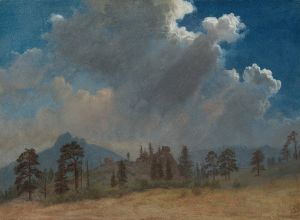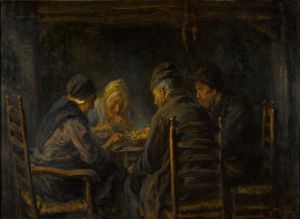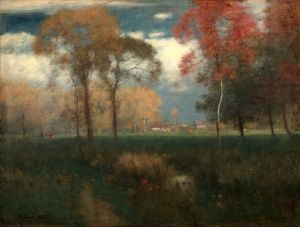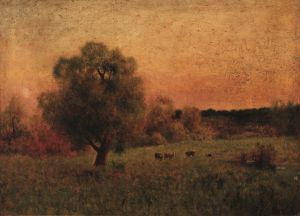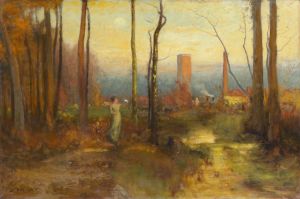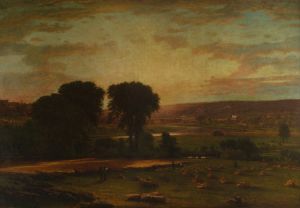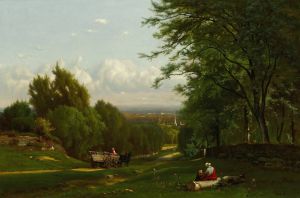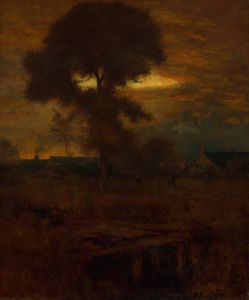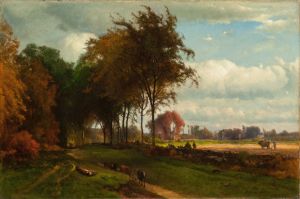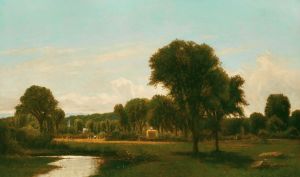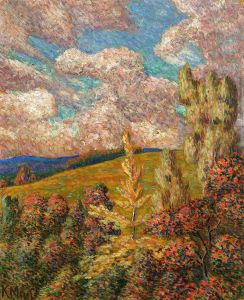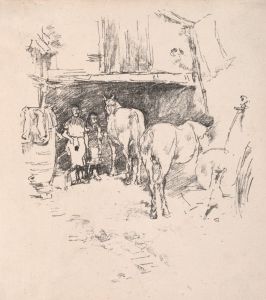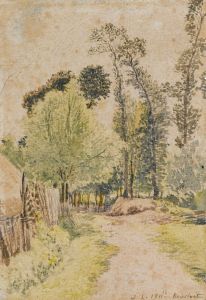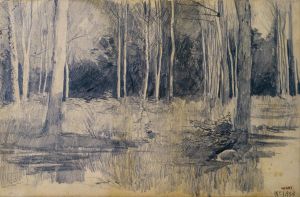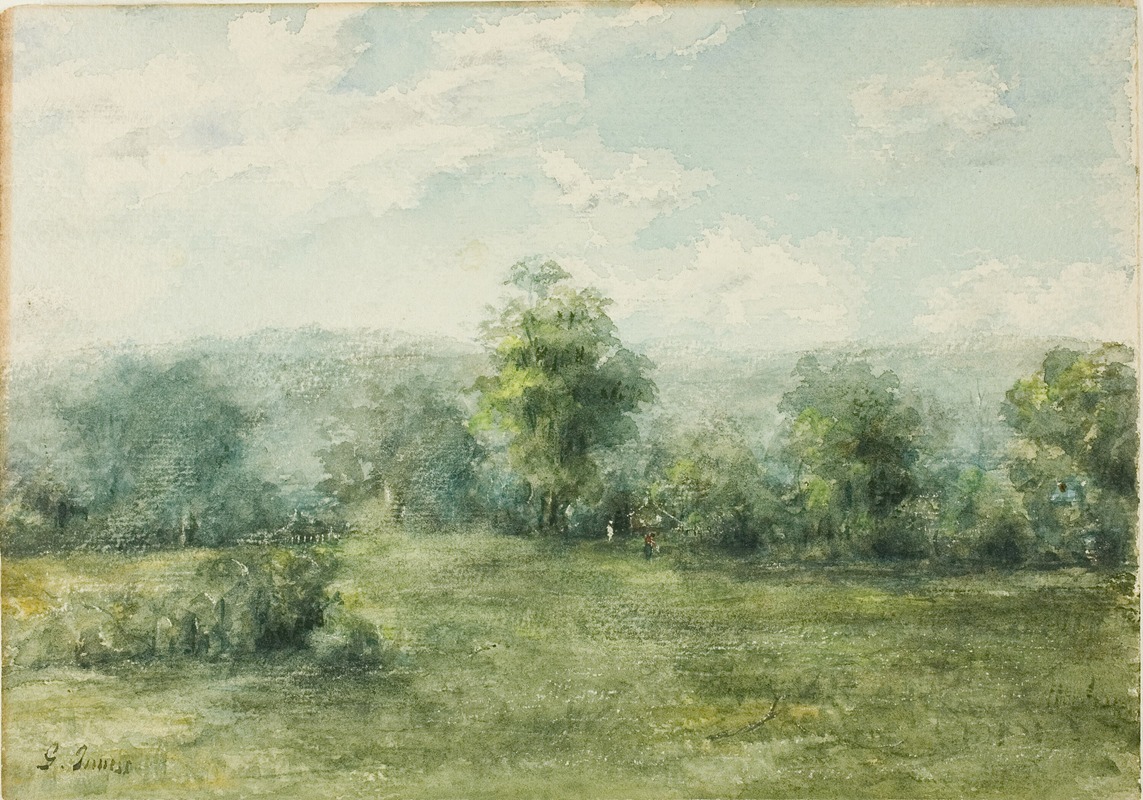
Landscape
A hand-painted replica of George Inness’s masterpiece Landscape, meticulously crafted by professional artists to capture the true essence of the original. Each piece is created with museum-quality canvas and rare mineral pigments, carefully painted by experienced artists with delicate brushstrokes and rich, layered colors to perfectly recreate the texture of the original artwork. Unlike machine-printed reproductions, this hand-painted version brings the painting to life, infused with the artist’s emotions and skill in every stroke. Whether for personal collection or home decoration, it instantly elevates the artistic atmosphere of any space.
George Inness was an influential American landscape painter, born on May 1, 1825, in Newburgh, New York. He is often associated with the Hudson River School, though his style evolved significantly throughout his career, eventually aligning more closely with the Tonalist movement. Inness's work is celebrated for its emotive use of color and light, as well as its spiritual and philosophical depth.
One of Inness's notable works is "Landscape," a painting that exemplifies his mature style. While specific details about this particular painting, such as its creation date or current location, may not be widely documented, it is representative of Inness's broader body of work during the latter part of his career. Inness's landscapes often reflect his interest in the spiritual and the transcendental, influenced by his study of Emanuel Swedenborg's writings, which emphasized the connection between the natural world and the divine.
Inness's approach to landscape painting was distinct from that of his contemporaries in the Hudson River School. While the Hudson River School artists often focused on detailed, realistic depictions of the American wilderness, Inness sought to capture the mood and atmosphere of a scene. His use of soft, diffused light and harmonious color palettes aimed to evoke an emotional response from the viewer, rather than simply document a specific location.
Throughout his career, Inness traveled extensively, both within the United States and abroad. His travels to Europe, particularly Italy and France, exposed him to various artistic influences, including the Barbizon School, which emphasized naturalism and the beauty of rural landscapes. These experiences further shaped his artistic vision and contributed to the development of his unique style.
Inness's landscapes are characterized by their poetic quality and often feature serene, pastoral scenes. He frequently depicted the changing effects of light and atmosphere, capturing the subtle transitions of dawn, dusk, and the shifting seasons. His paintings invite viewers to contemplate the beauty and tranquility of nature, encouraging a sense of introspection and connection to the world around them.
George Inness's contributions to American art were significant, and his work continues to be celebrated for its innovative approach to landscape painting. His ability to convey the spiritual essence of nature through his art has left a lasting impact on the field, influencing subsequent generations of artists. Inness passed away on August 3, 1894, in Bridge of Allan, Scotland, leaving behind a rich legacy of artwork that continues to inspire and resonate with audiences today.
While specific information about the painting "Landscape" may be limited, it remains an integral part of understanding Inness's artistic journey and his enduring influence on the landscape genre. His work exemplifies the power of art to transcend the physical world and touch upon the deeper, more profound aspects of human experience.





